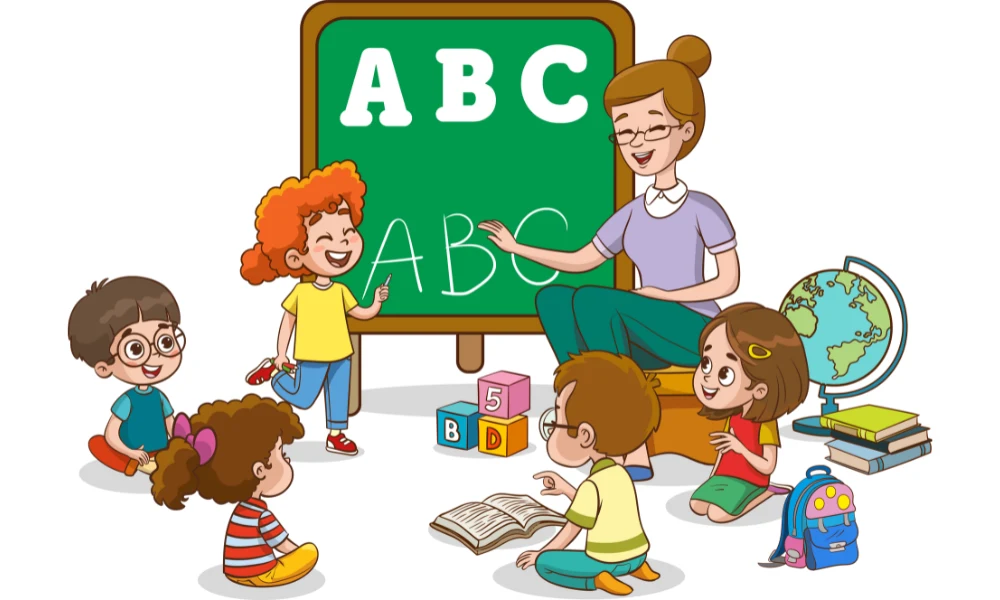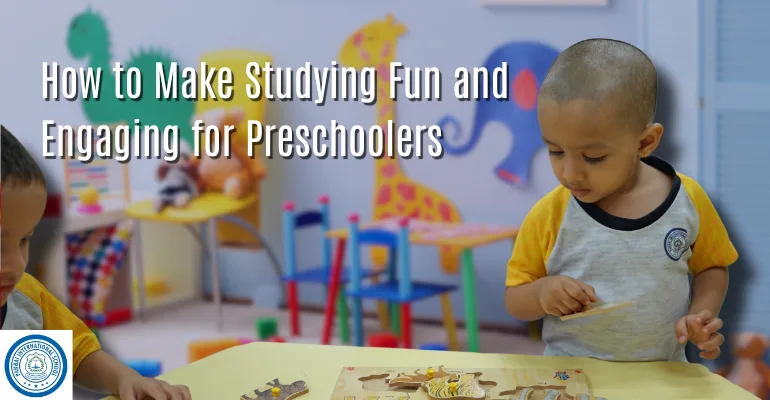How to Make Studying Fun and Engaging for Preschoolers
February 11, 2025 2025-02-11 5:41How to Make Studying Fun and Engaging for Preschoolers
Imagine a world where learning the ABCs feels like a treasure hunt, counting numbers is more exciting than a game of hide-and-seek, and every study session sparks curiosity and joy. Sounds fun, right?
That’s exactly the secret to early childhood education—making studying fun and engaging. Preschoolers thrive when learning feels like play, not a chore. The good news is, you don’t need fancy tools or complicated methods to achieve this.
Whether you’re a parent or an educator at one of the Best Pre Schools in Santacruz, these creative strategies will help transform study time into an adventure filled with laughter, discovery and growth.
Why It’s Important to Make Studying Fun for Preschoolers


At the preschool stage, children are naturally curious and eager to explore the world around them. However, traditional teaching methods can sometimes stifle that enthusiasm.
When learning is fun:
- Children stay engaged longer.
- They retain information more effectively.
- It fosters a positive attitude towards education from an early age.
Now, let’s explore some practical ways to make studying fun and engaging for your little learners.
Ways How to Make Studying Fun and Engaging:


1. Turn Lessons into Games
Children love games, and integrating learning with play is one of the most effective ways to keep them engaged.
- Memory Matching Games: Use flashcards for numbers, letters, or shapes.
- Treasure Hunts: Hide objects around the house or classroom and give clues that involve simple math or vocabulary questions.
- Counting Races: Turn basic counting exercises into fun competitions—“Who can count the most red toys in 30 seconds?”
Games create a dynamic learning environment where children absorb new concepts effortlessly.
2. Incorporate Music and Movement
Preschoolers are bundles of energy, so why not channel that energy into learning?
- Sing-Along Songs: Create catchy tunes for the alphabet, numbers, or days of the week.
- Dance and Learn: Combine simple dance moves with lessons, like jumping while counting or clapping to spell words.
- Rhythm Games: Use drums or clapping patterns to teach syllables or phonics.
Music not only makes lessons memorable but also helps develop coordination and language skills.
3. Use Storytelling as a Learning Tool
Stories capture the imagination of young minds and make learning relatable.
- Interactive Reading: Pause while reading to ask questions about the plot, characters, or predictions.
- Story Creation: Let children create their own stories using drawings or toys as characters.
- Role-Playing: Act out stories to build language skills, boost confidence, and reinforce comprehension.
Storytelling fosters creativity, improves vocabulary, and helps children connect emotionally with the material.
4. Bring Learning Outdoors
Sometimes, the best classroom is outside. Nature is filled with opportunities for hands-on learning.
- Nature Scavenger Hunts: Find objects of specific colors, shapes, or textures.
- Counting in Nature: Count rocks, leaves, or flowers to practice basic math.
- Outdoor Science Experiments: Simple activities like observing insects or planting seeds teach scientific observation.
Fresh air and physical activity stimulate both the mind and body, making learning more dynamic and memorable.
5. Encourage Hands-On Activities
Preschoolers learn best through touch and exploration.
- Arts and Crafts: Use finger painting, coloring, and clay modeling to teach shapes, colors, and letters.
- Building Blocks: Develop problem-solving skills through stacking, sorting, and constructing.
- Sensory Play: Create sensory bins with rice, sand, or water to explore textures while learning concepts like volume or measurement.
Hands-on activities promote cognitive development, fine motor skills, and critical thinking.
6. Integrate Technology in Moderation
While screen time should be limited, interactive educational apps can enhance learning when used wisely.
- Phonics Apps: Help with letter recognition and early reading skills.
- Math Games: Teach counting, shapes, and simple arithmetic through engaging visuals.
- Virtual Field Trips: Explore places like zoos, aquariums, or outer space from the comfort of your home.
Ensure screen time is balanced with physical activities to maintain a healthy learning routine.
7. Make Learning Part of Everyday Life
Learning doesn’t have to be confined to a desk or classroom.
- Grocery Store Math: Ask your child to count items, identify colors, or sort fruits and vegetables.
- Cooking Lessons: Teach measurements, sequencing, and vocabulary while preparing meals together.
- Chore Challenges: Turn simple tasks into learning moments, like matching socks by patterns or organizing toys by size.
When learning becomes part of daily life, it feels natural, relevant, and exciting for preschoolers.
8. Celebrate Small Wins
Positive reinforcement motivates children to stay engaged and eager to learn.
- Sticker Charts: Reward completed tasks with colorful stickers.
- Achievement Badges: Create simple badges for milestones like “Alphabet Explorer” or “Counting Champion.”
- Verbal Praise: A simple “Great job!” or “I’m proud of you!” goes a long way in boosting confidence.
Celebrating progress, no matter how small, builds a child’s self-esteem and love for learning.
9. Keep It Light and Playful
The goal of preschool learning isn’t perfection—it’s exploration.
- If a child seems frustrated, take a break and return to the lesson later.
- Mix in silly games, jokes, or funny voices to keep the mood light.
- Allow freedom to make mistakes without fear of criticism.
When learning feels like play, children are more likely to stay curious and enthusiastic.
10. Follow the Child’s Lead
Every child has unique interests. Use those interests as a foundation for learning.
- If they love dinosaurs, use dinosaur toys to teach counting or new vocabulary.
- For space enthusiasts, create simple “rocket” crafts while learning about planets.
- Encourage questions and let children explore topics they’re passionate about.
When children are excited about a subject, learning happens naturally and joyfully.
Conclusion
Knowing how to make studying fun isn’t about reinventing the wheel—it’s about creativity, patience, and understanding what excites young minds. By turning lessons into games, using music and storytelling, exploring the outdoors, and celebrating small achievements, you can create an environment where learning is not just effective but enjoyable.
Even at the Best Pre Schools in Santacruz, educators focus on blending structured learning with play-based activities because it’s proven to boost engagement and retention. So, whether you’re a teacher or a parent, remember—when learning feels like an adventure, children will always be eager to join the journey.




